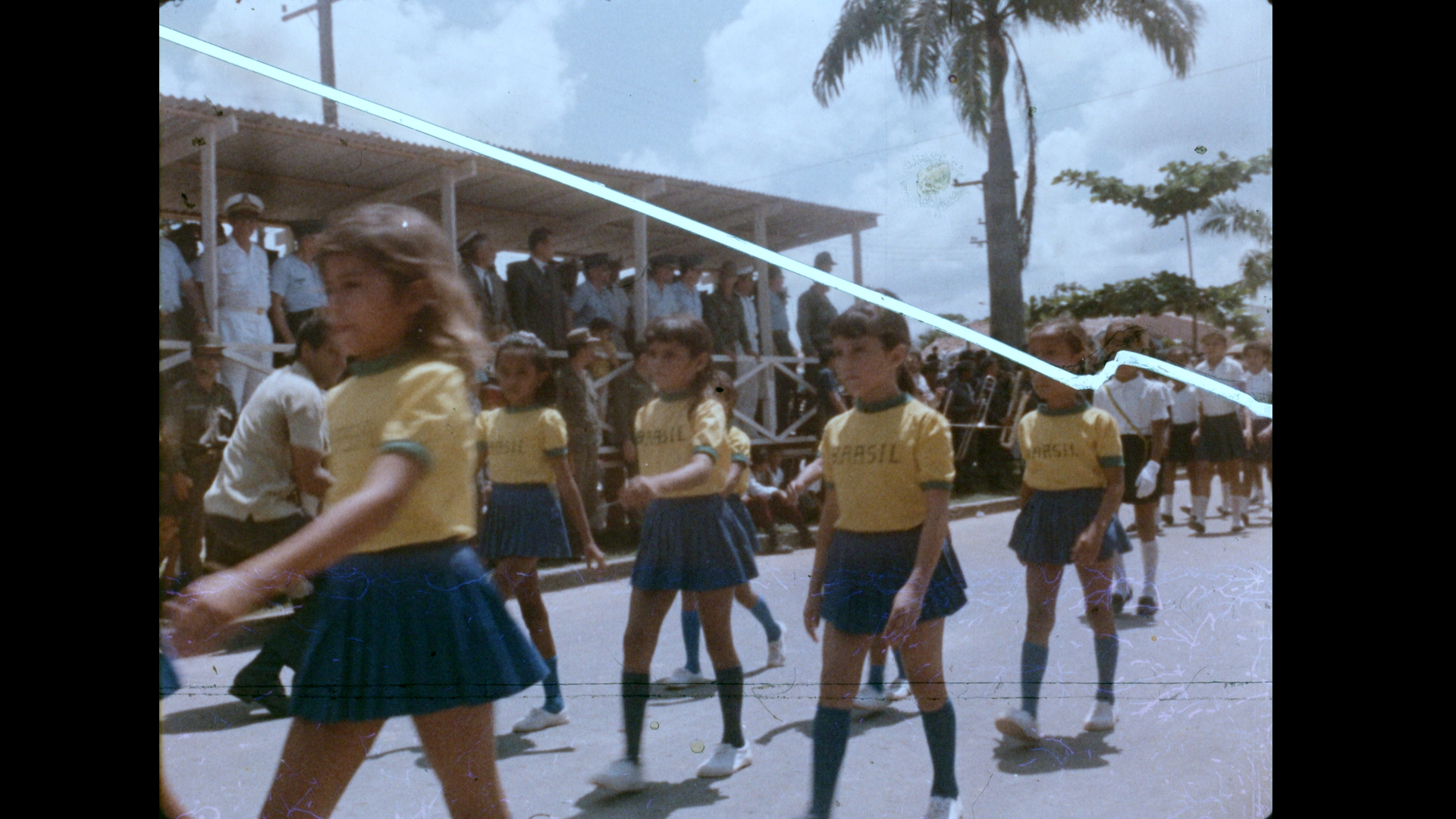Below, we publish a few questions addressed to director João Pedro Bim about his competition film Behind Closed Doors.
Archivio Aperto explores the theme of memory and archives. How does your film intercept this theme? What elements of the film highlight this exploration of memory?
Behind Closed Doors is made entirely from archival material, but of a particular kind: it’s material produced by the Brazilian State during the Military Dictatorship (1964-1985). On one side, there’s an audio recording of a secret meeting, where ministers decide to intensify authoritarian measures. On the other side, we work with propaganda materials produced by the regime for public exhibition in cinemas and on TV. We explore the sum or clash of these two elements to try and reveal something about how this authoritarian state spoke about itself and represented itself. There’s an attempt to recreate the experience of being subjected to these images, of sitting in a cinema in 1974 and having to watch the regime’s propaganda. We are convinced of the effectiveness of these images, and there’s something in showing them again to try to understand the present-day relevance of the dictatorship’s discourse in Brazil. I’ve heard from people in their early 60s who saw the film: “I remember that image, I remember that music.” The film is interested, perhaps, in how this type of audiovisual production could have generated some degree of consent in Brazilian society at the time—and what of it might have persisted in Brazil today.
The next step is to try and deconstruct them, to create a discomfort that distances the viewer. This is where the editing intervention comes in, combined with the audio from the government meeting. In the audio, things are more direct, as the ministers explicitly say: “We’re diving into a dictatorship.” It’s a behind-the-scenes glimpse that holds relevance in Brazil’s political memory, especially in a context where significant sectors here deny the very existence of the dictatorship as it was.
How do archive images influence the construction of the narrative? Can you tell us about a sequence in your film where archive images transformed or enriched the message you intended to communicate?
Since this material was a tool for manufacturing consent, we explore it in two ways: showing it, aiming to highlight the content and formal effectiveness, and distancing, aiming to foster a critical perspective in the viewer. Their discourse gives us hints, and we try to see what is elusive, what goes unnoticed, the violence embedded in a phrase or a shot. Maybe to search for some historical truth by creating a mosaic of lies.
There’s a sequence, for example, about the construction of the Trans-Amazonian Highway in the 1970s. The sequence glorifies deforestation, exalts the progress of grand infrastructure projects, and the arrival of “civilization” in the Amazon. If you look at it, you’ll notice that the propaganda is filled with nostalgic vocabulary from Brazil’s colonial period. We try to bring it to the forefront through the editing: we pair this scene with a series of propaganda fragments where the dictatorship references Brazilian history—always glorifying the great “heroes” of the colonial era. Through the editing, we attempt to suggest that there is something omitted: terrible violence against indigenous and local people, hidden within the images of progress. Then, the minister’s audio comes in, stating that the regime must toughen up to ensure economic development… It’s truly a long-term history, a continuation of colonial exploitation in modern terms. It was already there in the archives, we just had to assemble, reorganize, and try to bring it to the surface.
What found footage or experimental films have played an important role in your education?
I think mainly the work of Harun Farocki (particularly Images of the World and the Inscription of War and The Silver and the Cross). The essays by Chris Marker and by Patricio Guzman. Firouzeh Khosrovani’s Radiograph of a Family. The Brazilian Images of the Estado Novo by Eduardo Escorel, Eduardo Coutinho’s One Day in the Life, and Anita Leandro’s Portraits of Identification. While making Behind Closed Doors, I was thinking a lot about the work of Gianikian and Ricci Lucchi, Barbara Hammer’s History Lessons, Susana de Sousa Dias’s Fordlandia Malaise, and Ettore Scola’s Una Giornata Particolare.
